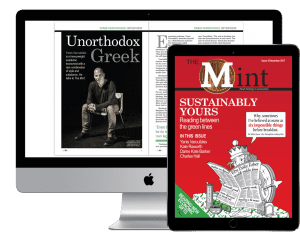|
Getting your Trinity Audio player ready...
|
With many magazines struggling to maintain cash-flow and build a solid business model an ability to develop sustainable income streams is crucial. Mary Hogarth investigates where membership packages are the way forward.
Prior to the digital disruption of 2008, magazines were still basing their key business strategy on that traditional revenue model – newsstand sales, subscriptions and advertising. As the era of apps radically changed consumer habits. The impact of which has seen magazine newsstand sales shrink substantially over the past decade, particularly among the consumer and some specialist markets.
This combined with a continual rising distribution costs along with a downward trend in advertising sales for some sectors, has forced publishers to rethink their strategy, particularly when it comes to copy sales. Something had to change and revamping the way subscribers pay for their magazines has long been on the radar.
To survive and thrive publishers must build a loyal, engaged audience if they are to achieve strong distribution sales, all while managing cash-flow. Previously revenue from the traditional subscription model helped maintain a healthy cash-flow. However, this is simply no longer viable as today’s readers are less willing to subscribe to magazines.
As magazine subscriptions decline across the board, widening audience participation and creating communities has now become a top priority. One emerging trend is the creation of memberships schemes, which are fast becoming an increasingly attractive alternative to subscriptions. These enable publishers to only only build a community but package their content across print, digital and online.
But are memberships the way forward?
Perhaps. This model certainly has the potential to build a strong revenue stream and achieve sustainability for the long term. But before you go rushing to adopt this methodology due diligence is advised.
Take heed, one size does not fit all.
Making membership work
For the B2B sector or financial markets, particularly where the content is highly valuable to the audience, this model can work well especially if the brand is seen as a trusted source of information. A good example is The Lawyer. This B2B title, published by Centaur Media, has successfully navigated the challenges of the digital disruption.
The Lawyer’s distribution strategy has moved away from subscriptions. It now focuses on using tiered membership packages in addition to newsstand sales. Packages range from a free basic option to the premium corporate, instead of the traditional subscription model.
In a recent interview for my book, Business Strategies for Magazine Publishing, Steve Newbold, Centaur’s divisional managing director of media and events, revealed that one of the biggest challenges was finding a route to market demands. He also admitted that with B2B it is “generally easier to get your audience to pay for specialist knowledge than in other market sectors”.
It is this factor – together with Centaur’s ability to adopt a 360-degree approach as well as an accurate assessment the value of premium content such as analysis and reports – that has seen The Lawyer evolve from the chaos of the digital disruption into a sustainable brand for the long-term.
Case study – The Mint

Another example where the membership model has been successfully employed is The Mint, a magazine set up 18 months ago by Henry Leveson-Gower to “provide engaging stories about the economy, economic policy and research”. Built on a membership model from conception, this title has been created around a community of like-minded thinkers.
Below Henry Leveson-Gower, founder and CEO of The Mint magazine and Promoting Economic Pluralism (PEP), reveals why he opted for a membership model, how it is progressing and what the future holds.
I felt it was particularly relevant to the mission-led nature of The Mint magazine and the fact that the publication was part of trying to develop as a movement for change and therefore had a core set of values around which a community-based membership could develop. Also, we provide events, which enables users to have access to a package of value-based products as part of their membership. This enables us to involve the community in future events as well as keeping them in the loop in terms of the mission of what we are trying to achieve and our continual progression – so there is a focus on that sort of value and identity.
The most important lesson I learned was that it is not a straightforward process. There are some who are totally dedicated to your magazine’s agenda, but won’t necessary subscribe to your membership package because they already see themselves as part of another group. Then at the other end of the scale, there are those who are vaguely interested but have not bought into the values so they won’t join either.
To establish a strong membership community, you need to find that middle set – people who are not already part of the central activist of the movement but who engage, are sympathetic to the cause and want to support it.
Overall, the membership process is a slow-build model and the key is targeting those readers who fall into that middle category.
Although The Mint isn’t in profit we are now at a break-even point based on the revenue from events, subscriptions and the membership package. We have also reduced the cost of production.
In the long-term? The Mint’s revenue streams will widen to include advertising, subscriptions as well as membership and events. My advice to anyone thinking about setting up membership is that
you need to allow a sufficient timeframe as building a membership community is a gradual process.
My verdict
For membership models to be successful then there must be valuable content and added-value in terms of analysis and databases. Moreover, if starting a new magazine then you must allow in a sufficient timeframe to build a community.
I strongly believe that membership models will only thrive if the content is essential to the audience – be it intelligence with regards to their business, finances or some aspect of their lives. While this could also work for some titles in the specialist sector, for mainstream consumer titles this strategy is unlikely to be successful.
The Mint cover credit to The Mint magazine


